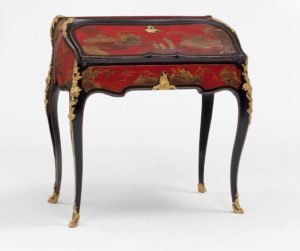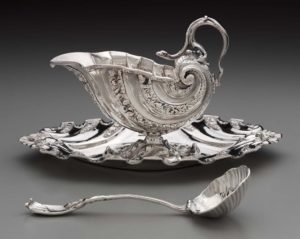Casanova’s Europe
By COURTNEY HARRIS,
Curatorial Research Fellow, Museum of Fine Arts, Boston
From August 27, 2017–October 8, 2018, the Kimbell Art Museum in Fort Worth, the Fine Arts Museum of San Francisco, and the Museum of Fine Arts, Boston, will host the collaborative traveling exhibition Casanova: The Seduction of Europe. Giacomo Casanova (1725–1798) has come to epitomize the sophistication of 18th-century Europe through his memoirs and their account of the creativity, sensual pleasure, and social and political ambition he experienced.
Although famous to posterity as a seducer and adventurer, contemporaries regarded him as a charming and witty conversationalist and an international man of letters, with expertise on various topics. Casanova saw first-hand many of the principal art centers of 18th-century Europe and knew many of the greatest intellectuals and dignitaries of the era: Voltaire, Rousseau, the castrato singer Farinelli, Benjamin Franklin, Catherine the Great, popes and kings, among others.
Casanova: The Seduction of Europe will use Casanova as a guide to introduce 21st-century viewers to the variety and complexity of European art and culture that formed the backdrop of his life. The exhibition combines paintings, sculpture, works on paper, decorative art objects, costume, and musical instruments that illustrate the splendor Casanova knew, structured by the chronology and geography of his life. The art of the era will be represented in works by Canaletto, Bellotto, Tiepolo, Longhi, Piranesi, Boucher, Nattier, Houdon, Fragonard, Hogarth, and many others. The exhibit will display the period’s decorative arts alongside contemporary sculpture, works on paper, and fashion. A special feature will be three installations that bring Casanova’s world to life through mannequins in 18th-century costume and period furniture. The settings include a visit to a convent in Venice, a morning toilette in Paris, and a night of cards in London.
As the first American exhibition on the life and career of Casanova, and only the third major exhibition globally, Casanova: The Seduction of Europe will address his unjustly overlooked intellectual career. Throughout his life, he made a point of meeting the great luminaries of his day, and, in addition to his famous memoir, Histoire de ma vie, produced essays, plays, opera libretti, and a translation of the Iliad. He even served as court librarian to Count Joseph Karl von Waldstein in Bohemia.
The decorative arts will assume particular importance for this exhibition through their role in the tableau of Casanova’s life. As his memoirs provide some of the most detailed accounts of 18th-century culinary habits, the host museums’ vast collections of ceramics and silver will aid in the explanation of the pleasures and complexity of private dining (along with a video projection of a recreated banquet). Furniture, musical instruments, sculpture, historic costumes, and even an early-18th-century French sedan chair from the Fine Arts Museum of San Francisco will round out the interpretation. This is a visual feast not to miss!
Courtney Harris received the Trust’s first-ever Study Trip Abroad scholarship to attend last fall’s Yorkshire program, an experience that directly informed her research for the Casanova exhibition. She presented her findings during January’s inaugural Emerging Scholars Colloquium in New York.
By COURTNEY HARRIS,
Curatorial Research Fellow, Museum of Fine Arts, Boston
From August 27, 2017–October 8, 2018, the Kimbell Art Museum in Fort Worth, the Fine Arts Museum of San Francisco, and the Museum of Fine Arts, Boston, will host the collaborative traveling exhibition Casanova: The Seduction of Europe. Giacomo Casanova (1725–1798) has come to epitomize the sophistication of 18th-century Europe through his memoirs and their account of the creativity, sensual pleasure, and social and political ambition he experienced.
Although famous to posterity as a seducer and adventurer, contemporaries regarded him as a charming and witty conversationalist and an international man of letters, with expertise on various topics. Casanova saw first-hand many of the principal art centers of 18th-century Europe and knew many of the greatest intellectuals and dignitaries of the era: Voltaire, Rousseau, the castrato singer Farinelli, Benjamin Franklin, Catherine the Great, popes and kings, among others.
Casanova: The Seduction of Europe will use Casanova as a guide to introduce 21st-century viewers to the variety and complexity of European art and culture that formed the backdrop of his life. The exhibition combines paintings, sculpture, works on paper, decorative art objects, costume, and musical instruments that illustrate the splendor Casanova knew, structured by the chronology and geography of his life. The art of the era will be represented in works by Canaletto, Bellotto, Tiepolo, Longhi, Piranesi, Boucher, Nattier, Houdon, Fragonard, Hogarth, and many others. The exhibit will display the period’s decorative arts alongside contemporary sculpture, works on paper, and fashion. A special feature will be three installations that bring Casanova’s world to life through mannequins in 18th-century costume and period furniture. The settings include a visit to a convent in Venice, a morning toilette in Paris, and a night of cards in London.
As the first American exhibition on the life and career of Casanova, and only the third major exhibition globally, Casanova: The Seduction of Europe will address his unjustly overlooked intellectual career. Throughout his life, he made a point of meeting the great luminaries of his day, and, in addition to his famous memoir, Histoire de ma vie, produced essays, plays, opera libretti, and a translation of the Iliad. He even served as court librarian to Count Joseph Karl von Waldstein in Bohemia.
The decorative arts will assume particular importance for this exhibition through their role in the tableau of Casanova’s life. As his memoirs provide some of the most detailed accounts of 18th-century culinary habits, the host museums’ vast collections of ceramics and silver will aid in the explanation of the pleasures and complexity of private dining (along with a video projection of a recreated banquet). Furniture, musical instruments, sculpture, historic costumes, and even an early-18th-century French sedan chair from the Fine Arts Museum of San Francisco will round out the interpretation. This is a visual feast not to miss!
Courtney Harris received the Trust’s first-ever Study Trip Abroad scholarship to attend last fall’s Yorkshire program, an experience that directly informed her research for the Casanova exhibition. She presented her findings during January’s inaugural Emerging Scholars Colloquium in New York.




